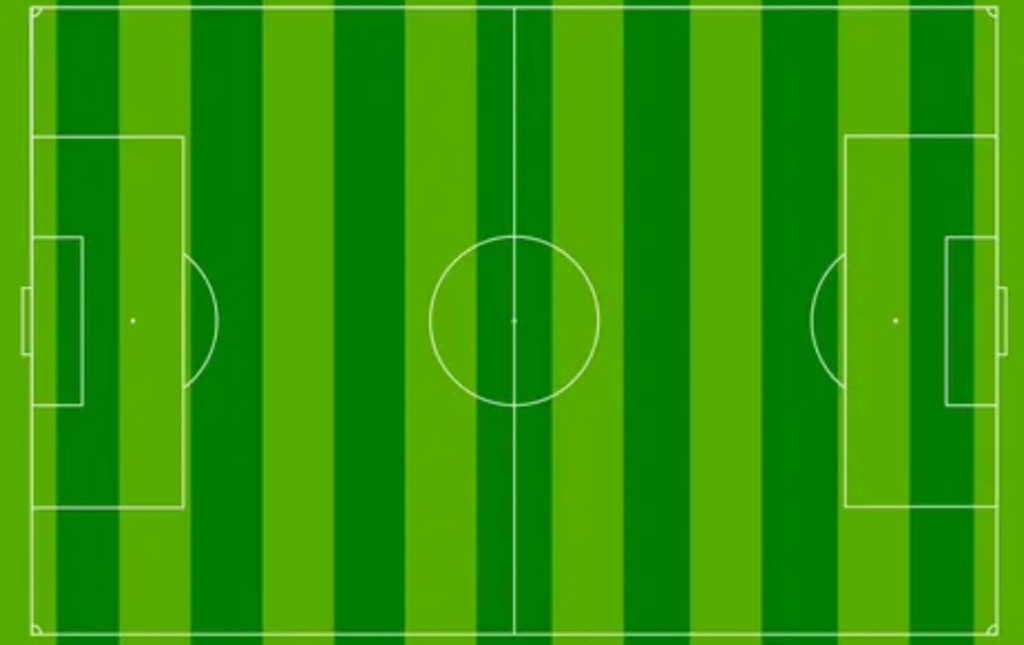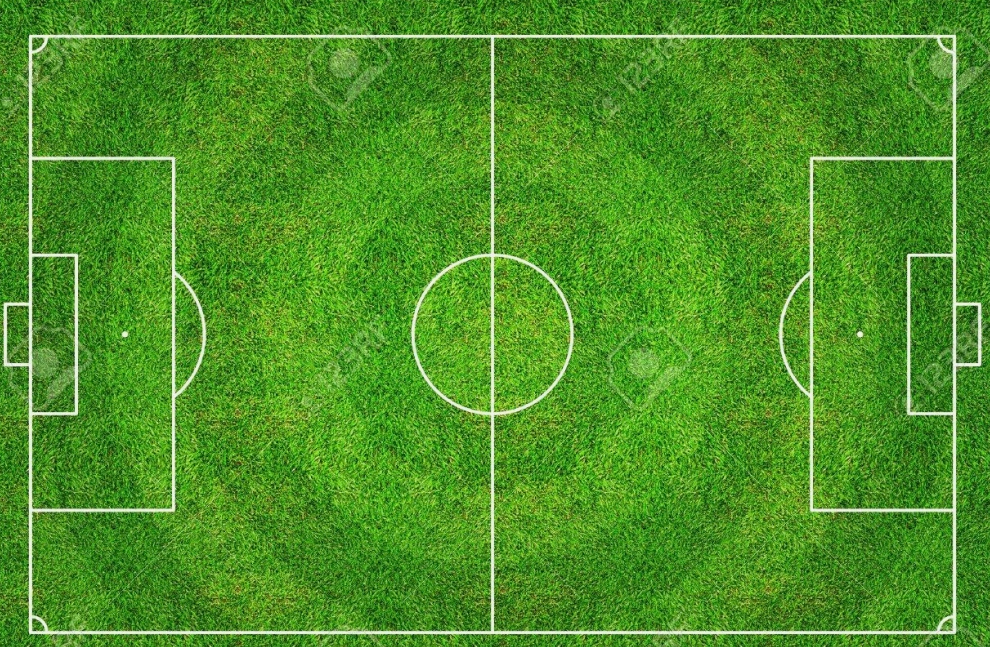A soccer field diagram shows the layout of a soccer field with player positions and field markings. It is a visual representation of the field’s dimensions and key areas such as the penalty box, goal posts, and center circle. Understanding the soccer field diagram is essential for players, coaches, and referees to navigate the field effectively during gameplay. The diagram helps in strategizing plays, positioning players, and enforcing rules based on the field markings. Whether it’s a 7v7 or 11v11 game, having a clear understanding of the soccer field diagram is crucial for a successful match.
By familiarizing yourself with the diagram, you can enhance your overall performance and contribute to a more organized and enjoyable game experience.
Soccer Field Diagram

History of Soccer Field Design
The history of soccer field design has evolved to accommodate the changing demands of the game. From the early days of soccer to the modern era, the dimensions and markings of soccer fields have undergone significant transformations. Understanding the evolution of field dimensions and changes in field markings provides valuable insight into the development of the sport.
Evolution of Field Dimensions- Soccer Field Diagram
Throughout history, soccer field dimensions have experienced gradual modifications to enhance the playing experience. In the early stages, the size of the soccer field varied considerably, with no standardized dimensions. Over time, governing bodies such as FIFA established specific guidelines for field dimensions, aiming to optimize gameplay and ensure uniformity across different soccer competitions.
Changes In Field Markings- Soccer Field Diagram
The markings on a soccer field play a crucial role in regulating player movement and game dynamics. From the traditional center circle to the penalty area and goal box, these markings have evolved to accommodate strategic gameplay and fair competition. The implementation of precise measurements and standardized markings has contributed to the professionalization of soccer and the development of tactical strategies within the game.
Standard Soccer Field Dimensions
Soccer is a globally beloved sport with a standardized field size to ensure fair play and consistency. Understanding the standard soccer field dimensions is crucial for players, coaches, and fans alike. Let’s explore the key dimensions and areas of a standard soccer field.
Length and Width
The standard soccer field length is 100 to 130 yards, while the width ranges from 50 to 100 yards. These dimensions allow for optimal gameplay and strategic maneuvering.
Goal Box and Penalty Area
The goal box, also known as the six-yard box, is situated 6 yards from the goal line and extends 6 yards into the field. The larger penalty area, commonly referred to as the 18-yard box, extends 18 yards from the goal line and 44 yards in width.
Components of A Soccer Field
A soccer field consists of various components, including the center circle, penalty box, goals, and goal posts. The field is marked with lines such as the halfway line, penalty area, and corner areas. These elements come together to form the layout and dimensions of a standard soccer field diagram.
Soccer is a sport that requires a specific playing field. The field is rectangular and divided into sections that serve various purposes. The components of a soccer field include grass or turf, goal posts and nets, and corner flags. Here’s a breakdown of each component.
Grass or Turf
The playing surface of a soccer field can be made of natural grass or artificial turf. Natural grass is the traditional surface for soccer fields. It is more forgiving on the players’ joints and provides better ball control. However, it requires more maintenance and can be damaged by excessive use or weather conditions. Artificial turf, on the other hand, is more durable and requires less maintenance. It is also more consistent in terms of ball bounce and roll. Printable soccer field diagram and soccer field diagram pdf can help visualize the layout of the field.
Goal Posts And Nets
The goalposts are located at each end of the field and are made of metal. They are 8 yards apart and 8 feet tall. The goalposts are connected by a crossbar that is 8 feet off the ground. A net is attached to the posts and crossbar to catch the ball when it goes into the goal. The net must be fastened securely to the ground to prevent it from moving during the game.
Corner Flags
Corner flags are placed at each corner of the field to mark the boundaries of the playing area. They are typically made of flexible plastic and are 5 feet tall. The flags must be able to withstand wind and player contact. They are used to indicate where a corner kick is taken from and to help referees determine whether the ball has gone out of bounds. In conclusion, the components of a soccer field are crucial to the game. The playing surface, goalposts and nets, and corner flags all serve important functions. Printable soccer field diagram and soccer field diagram pdf can be helpful tools to understand the layout of the field.
Soccer Field Markings
Center Circle
The center circle is a circular marking at the center of the soccer field, where the game starts and restarts after goals. It has a radius of 9.15 meters.
Penalty Arc
The penalty arc is a curved line extending from the top of the penalty area, with a radius of 9.15 meters. It is where penalty kicks are taken from.
Goal Area
The goal area, also known as the goal box, is rectangular in front of the goal. It extends 5.5 meters from the goal line and 5.5 meters into the field.

Variations In Field Design
Variations in field design play a crucial role in the dynamics of soccer matches. Different field designs can significantly impact the style of play and strategy employed by teams. Let’s explore some of the variations in field design that are commonly used in soccer.
Indoor Soccer Field
An indoor soccer field, also known as a futsal court, typically has dimensions that range from 25–42 meters in length and 16–25 meters in width. The smaller playing area of an indoor soccer field requires players to exhibit exceptional close control and quick decision-making. The reduced space often leads to a faster-paced and more technical style of play, making indoor soccer a thrilling spectacle for fans.
Small-sided Fields
Small-sided fields, which are commonly used for recreational and youth soccer games, come in various sizes. These fields are significantly smaller than standard soccer pitches, providing players with increased opportunities for involvement and skill development. Small-sided fields can range from 40–60 yards in length and 25–45 yards in width, fostering a more intimate playing environment that encourages quick passing and close ball control.
Importance of Accurate Field Measurements
Soccer field measurements play a crucial role in the game’s overall dynamics and the safety of the players. Accurate field measurements ensure that the game is played within the specified dimensions, allowing for fair play and reducing the risk of injuries. Let’s delve into the significance of precise field measurements in more detail.
Impact on Game Dynamics
Accurate field measurements are essential for maintaining the integrity of the game. Proper field dimensions contribute to fair play by providing equal opportunities for both teams. When the field measurements are precise, it ensures that the game dynamics remain consistent, allowing players to strategize and execute plays effectively within the designated area.
Player Safety
Precise field measurements are directly linked to player safety. By adhering to the correct dimensions, the risk of player collisions and injuries is significantly reduced. The field’s proper layout ensures that players have adequate space to maneuver without the fear of running into obstacles or each other, thereby minimizing the likelihood of accidents.
Technology In Field Layout
Technology plays a crucial role in the layout of soccer fields, ensuring precision and accuracy in the field design. Two significant technological advancements in this area include the use of GPS and Laser Measurements, as well as Computer-Aided Design (CAD).
Use of GPS and Laser Measurements
GPS and Laser Measurements are utilized to accurately determine the dimensions and markings of a soccer field. These technologies ensure the precise placement of key elements such as the center circle, penalty box, and goal area.
Computer-aided Design (CAD)
In the field layout process, CAD software allows designers to create detailed and customizable soccer field diagrams with labels. This technology enables the visualization of positions, lines, and dimensions with great accuracy.
Future Trends In Soccer Field Design
The future trends in soccer field design are evolving to incorporate advanced technology and innovative concepts. Soccer field diagrams are now being redesigned to optimize player performance and enhance spectator experience, with a focus on sustainability and safety. These developments aim to revolutionize the way soccer fields are constructed and utilized, shaping the future of the sport.

Future Trends in Soccer Field Design Soccer field design has come a long way from its humble beginnings, and there is no doubt that it will continue to evolve in the future. As technology advances, so too do the possibilities for creating new and innovative playing surfaces. In this section, we will explore some of the future trends in soccer field design, including innovations in playing surfaces and adaptation to changing game styles. Innovations in Playing Surfaces One of the most exciting trends in soccer field design is the development of new playing surfaces. The traditional grass field is still the most common, but there are now many other options available to teams and stadiums. Artificial turf has been around for a while, but it has improved significantly in recent years. Newer types of artificial turf are designed to look and feel more like natural grass, while also providing excellent durability and weather resistance. Some stadiums even use hybrid surfaces that combine natural grass with artificial fibers for the best of both worlds. Adaptation to Changing Game Styles As the game of soccer evolves, so too must the fields on which it is played. For example, the rise of possession-based playing styles has led to changes in the dimensions and layout of soccer fields.
Conclusion
Understanding the layout of a soccer field is crucial for players and coaches. The field markings play a significant role in gameplay and strategy. By familiarizing yourself with the field diagram, you can enhance your understanding of the sport. Explore different field layouts for various game formats.
